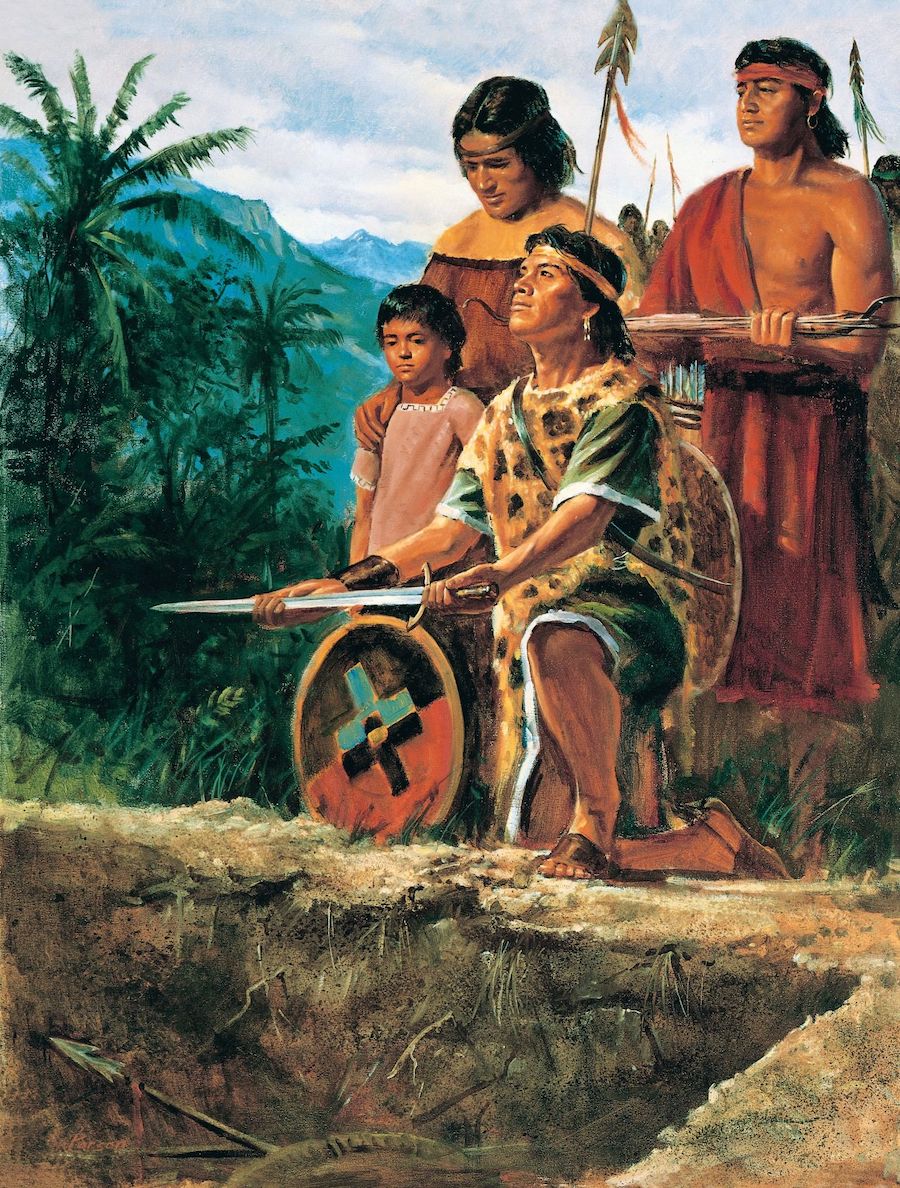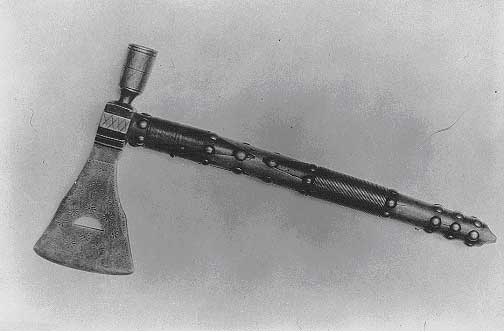They Did Bury Their Weapons of War, for Peace
 << Anti-Nephi-Lehies Burying their Weapons of War
<< Anti-Nephi-Lehies Burying their Weapons of War
"And now, my brethren, if our brethren seek to destroy us, behold, we will hide away our swords, yea, even we will bury them deep in the earth, that they may be kept bright, as a testimony that we have never used them, at the last day; and if our brethren destroy us, behold, we shall ago to our God and shall be saved.
And now it came to pass that when the king had made an end of these sayings, and all the people were assembled together, they took their swords, and all the weapons which were used for the shedding of man’s blood, and they did bury them up deep in the earth.
And this they did, it being in their view a testimony to God, and also to men, that they never would use weapons again for the shedding of man’s blood; and this they did, vouching and covenanting with God, that rather than shed the blood of their brethren they would give up their own lives; and rather than take away from a brother they would give unto him; and rather than spend their days in idleness they would labor abundantly with their hands.
And thus, we see that, when these Lamanites were brought to believe and to know the truth, they were firm, and would suffer even unto death rather than commit sin; and thus we see that they buried their weapons of peace, or they buried the weapons of war, for peace." (Alma 24:16-19)
-----------------------
Some passed down from generation to generation of some kind of information and knowledge of this pasted event was evidently and obviously passed on down from generation to generation even so that the American Indians still had that tradition of burying their 'weapons of war, for peace'.
-----------------------
...  << Tomahawk, used by the Indigenous peoples of North America, the American Indians.
<< Tomahawk, used by the Indigenous peoples of North America, the American Indians.
The Origin of the act of "Bury the Hatchet" was in our days traced at least back to: "...the 17th century American Native American tribes would literally bury a hatchet (a cutting tool) in the ground as a declaration of peace when their fighting ended." (Bury the Hatchet: Origin and Meaning, Bloomsbury International)
-----------------------
"An early mention of the practice is to an actual hatchet-burying ceremony. Samuel Sewall wrote in 1680 "of the Mischief the Mohawks did; which occasioned Major Pynchon's going to Albany, where meeting with the Sachem they came to an agreement and buried two Axes in the Ground; one for English another for themselves; which ceremony to them is more significant & binding than all Articles of Peace the hatchet being a principal weapon with them." (Burying the Hatchet, Wikipedia)
"...when the Spaniards arrived on this continent and began exploiting the Indians and destroying their culture, they encountered a group of Indians on the west coast of Mexico that would not fight. These Indians claimed a history of never having fought and stated they would not commence at that point...Mexican history records that before AD 1600 the Pacific Ocean was called El Nar del Sur--the 'Sea South'; [but] around AD 1600 it was renamed El Oceano de los Pacificos-the Ocean of the Peaceful People'" (Mexico a Traves de los Siglos, 2:459)
...
...
...